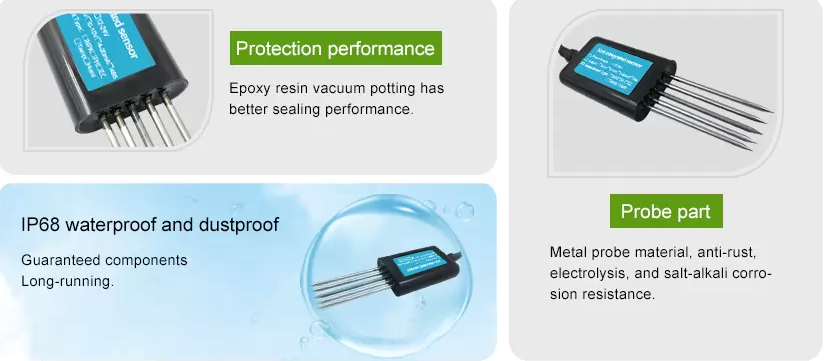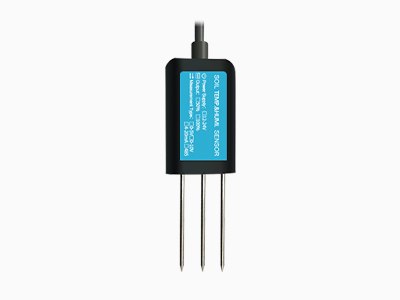Advances in sensor technology have brought many benefits to agriculture. Such as soil nutrient sensor, smart devices use sensor technology to measure and analyze soil nutrient levels in real time. So revolutionize the way farmers manage their fields. The advantages and significance of soil nutrient sensor in promoting precision agriculture were discussed.
Advantages and significance of soil nutrient sensor
Soil nutrient sensor have overcome the limitations of traditional soil testing methods in precision agriculture. Traditionally, farmers relied on labor-intensive and time-consuming soil sampling and laboratory analysis. However, soil nutrient sensors provide farmers with instant access to accurate and reliable data on soil nutrient content. This eliminates the need for manual sampling and significantly reduces the time and effort required for soil analysis.

The soil nutrient sensor plays a crucial role in optimizing fertilizer applications. By continuously monitoring soil nutrient levels, farmers can make informed decisions about the timing, type, and quantity of fertilizers to be applied. This precise application helps prevent over-fertilization, reducing environmental pollution and minimizing input costs for farmers. Additionally, by adjusting fertilizer regimes based on real-time sensor data, farmers can enhance crop yield and quality.
Incorporating soil nutrient sensors into precision agriculture promotes sustainable farming practices. These sensors enable farmers to implement site-specific nutrient management, tailoring fertilizer applications to suit the unique needs of different zones within a field. By identifying nutrient deficiencies or excesses at specific locations, farmers can address these issues promptly and efficiently. This targeted approach reduces the risk of nutrient runoff into water bodies and helps conserve natural resources.

Soil nutrient sensor can be seamlessly integrated with other digital agriculture technologies, such as geographic information systems (GIS) and farm management software. This integration allows farmers to create detailed nutrient maps, highlighting variations in soil nutrient levels across the field. By overlaying this data with yield maps and historical records, farmers gain valuable insights into the relationship between soil nutrient status and crop productivity. Such information enables them to make data-driven decisions regarding fertilizer management and crop rotation strategies.
The advent of artificial intelligence and machine learning has further enhanced the capabilities of soil nutrient sensors. These technologies enable the development of predictive models that can forecast crop nutrient requirements based on historical data and real-time sensor readings. By leveraging this information, farmers can optimize fertilizer applications even before nutrient deficiencies occur, preventing yield losses and ensuring sustainable crop production.
Conclusion:
Soil nutrient sensors have revolutionized precision agriculture by providing farmers with real-time, accurate soil nutrient data. Their integration with digital agriculture technologies allows for precise fertilizer management and promotes sustainable farming practices. With the continuous advancements in sensor technology and data analytics, soil nutrient sensors will continue to play a vital role in maximizing crop productivity while minimizing environmental impact. Embracing these innovations will pave the way for a more efficient and sustainable future in agriculture.
